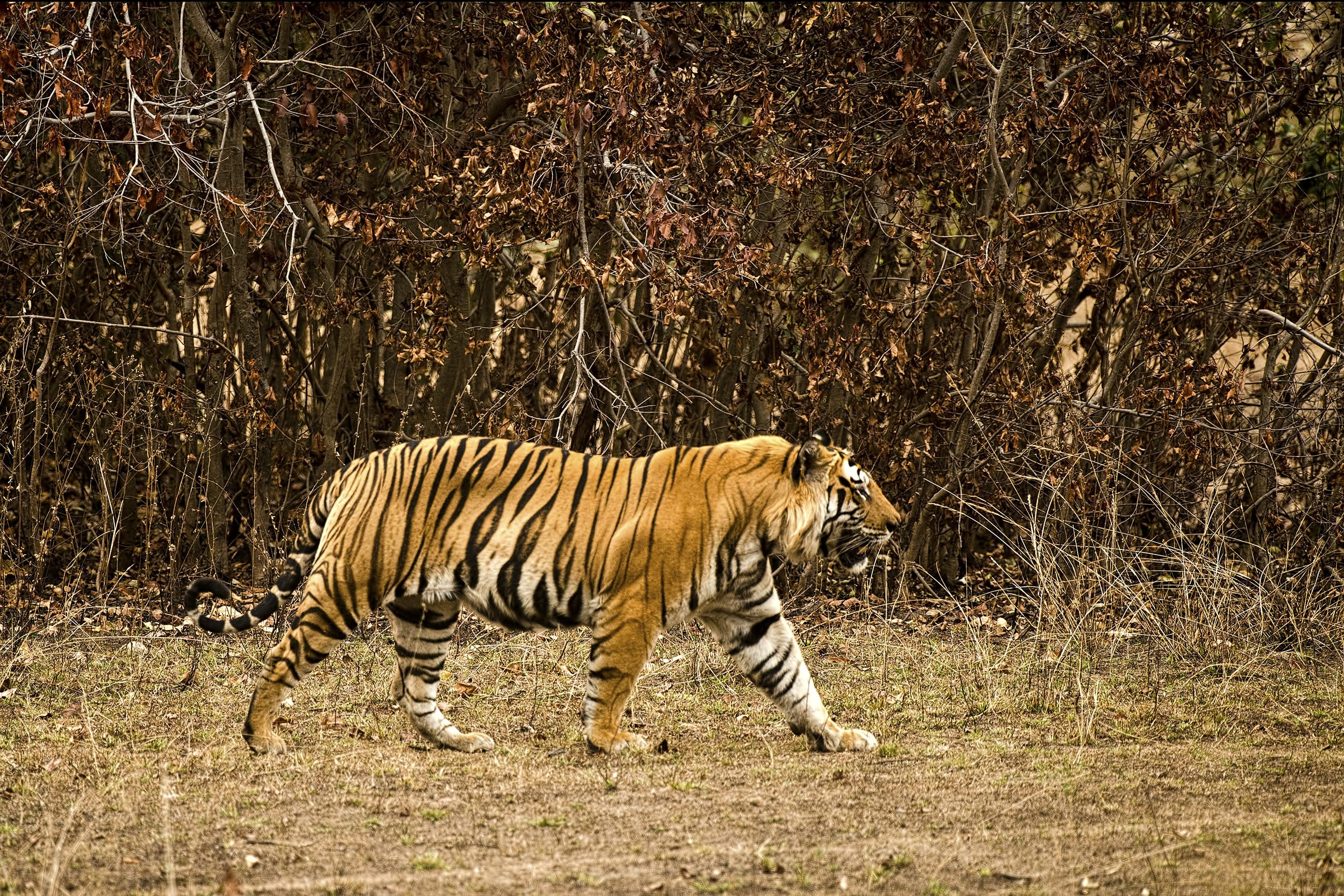A Himalayan Lesson – Not Every Sick Tiger is the Same!
While sitting in a café contemplating the surrounding forested hills, it struck me that there is something unique about the city of Thimphu in Bhutan. What other country can boast the presence of tigers in forests that lie within sight of their capital? And Bhutanese anomalies don’t stop there. Elsewhere tigers are a lowland species, prowling the forest glades and valley bottoms across their Asian refuges. But here, a population of at least 100 tigers roams unimpeded from the low edges of the Brahmaputra floodplain to the lofty Himalayan ridges as high as 11,000 feet above sea level.
It was a pursuit of the truth about one of these tigers that had brought me to this enigmatic Himalayan Kingdom. In March 2018, an adult tiger emerged from the forest on the outskirts of Thimphu. This impressive nine-year-old male was well known to researchers from camera trap images captured around the hills ringing the city. But from his most recent appearance, he was clearly in trouble. In scenes reminiscent of sick tigers observed in Russia, he walked as if in a trance in the daylight, unconcerned by the approach of people, and displaying nothing of the fearsome energy of a tiger in distress. This now familiar scenario has been seen repeatedly in Russian tigers infected with canine distemper virus, and it was this concern that brought me into contact with veterinarians with Bhutan’s Ministry of Agriculture and Forests.
As we learn more about distemper in tigers, the threat it represents to wild populations is becoming clearer. The virus circulates widely among unvaccinated dogs as well as populations of common wild carnivores. As many as one in three tigers in Russia have been infected, and mortality is common. Even small increases in mortality rates can spell extinction for small tiger populations. But we still have much to learn, in particular the extent of the problem across the tiger’s distribution: at this time, the threat distemper poses outside of Russia is unknown, as potential cases elsewhere have not been thoroughly investigated.
Just as we’ve seen in Russia, the Bhutanese tiger’s condition declined despite several weeks of care in captivity, and then he succumbed. So far, this really sounded like distemper. Thinking this might at last be our opportunity to learn more about the disease in non-Russian tigers, and with an invitation from Bhutan’s Nature Conservation Division, I boarded a plane for the Himalayas to help with the diagnosis.
The approach into Paro International Airport is not for the faint-hearted. Located on the closest piece of flat land to Thimphu that is big enough to accommodate a landing strip (40 km away!), the descent into Paro takes you weaving up steep terrace-walled valleys and forested hillsides that flash past on both sides of the plane!
At first glance, Bhutan certainly seemed to bear the hallmarks of a country where distemper might be an issue. Nurtured by compassionate Buddhist traditions, the city of Thimphu teems with street dogs – packs of them, lying in doorways, across sidewalks and retreating into the shade under parked cars. At night they come alive, with residents lying sleepless in their beds thanks to a cacophony of howling and yammering canines!
But it is here that our story takes an unexpected turn, as the tiger’s post mortem examination revealed something quite distinct from previous distemper cases. Within the confines of his skull, two coin-sized, fluid-filled cysts emerging from the surface of the brain, where they had been exerting pressure, were found: that could plausibly explain the tiger’s unusual behavior. Closer examination, and further laboratory testing, revealed these cysts to be the refuges of the larval stage of the human tapeworm! Like many parasites, tapeworms have a complex life cycle, with time spent in at least two different animal host species. The adult stage of human tapeworms inhabit the intestines of infected people, laying eggs that are dispersed with their daily defecation. Where sanitation is poor, the peculiar appetite of pigs invites the second, and intermediate life stage, with eggs hatching in the porcine intestine, and the larvae burrowing their way into the tissues. Here they form a cyst and await ingestion by humans with a penchant for undercooked meat, and their life cycle repeats from there.
Considering the series of chance events that a tapeworm follows through its life, it is perhaps not surprising that they sometimes happen to find the ‘wrong’ host… but it isn’t common! There have been just a handful of reports of domestic cats infected with human tapeworms, and never a case in a tiger (or indeed any other wild felid as far as we are aware).
This bizarre and possibly unique case, while devastating for the tiger, serves as a lesson for the rest of us. It illustrates the wonderful complexity of nature, and warns us to avoid making assumptions.
But the case also speaks to the intimate association between people, domestic animals and wildlife that dominates the modern world. With a human population approaching eight billion, we can expect more and more of these unusual events to occur, with infections moving between each point of the One Health triangle that connects humans, domestic animals and wildlife.
Meanwhile, our investigation into this case is ongoing. With the help of our Bhutanese colleagues, tissue samples from the tiger have now been brought to Cornell for a range of diagnostic tests. Our question is now whether there were other health-related factors that might have predisposed this unfortunate tiger to this most unusual of parasitisms. Most importantly, we must determine if this was a one-off case, or a sign of something more important for Bhutan’s precious tiger population.
Martin Gilbert is actively fundraising to support field studies to address gaps in our understanding of wild carnivore ecology and disease threats, which are critical to effective conservation.






